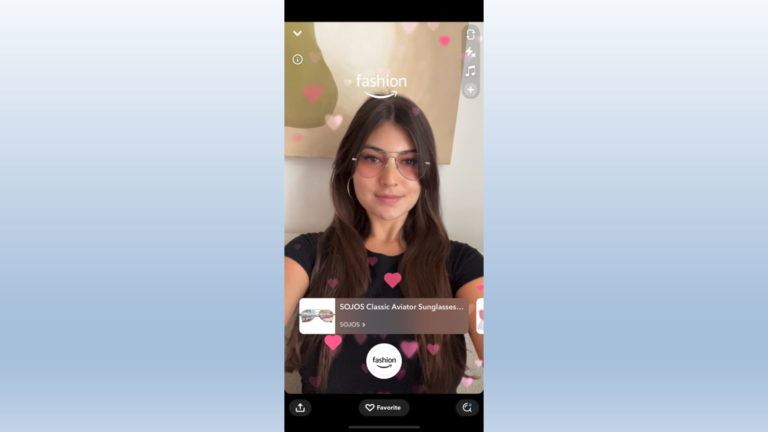
Though AR hasn’t demonstrated the world-changing capabilities that were touted in its circa-2017 hype cycle, it’s finding success in specific areas. Those include enterprise productivity and brand marketing, both of which were examined in recent ARtillery Intelligence reports.
Zeroing in on the AR marketing, one company leading the way in providing – and generating meaningful revenue from – AR marketing is Snap. Congruent with its “camera-company” label, it made an early commitment to social AR lenses and continues to double down on the technology.
In fact, of all the players cultivating consumer-based AR products and business models, none have achieved the traction of Snap. Though social AR competitors like Meta and TikTok have greater global reach, AR lenses are more of a central priority and “north star” for Snap.
This includes 6 billion AR lens engagements per day, among other metrics. But what are the lessons and takeaways? What’s Snap doing right in terms of product and platform development? This is the topic of a recent ARtillery Intelligence report, which we’ve excerpted below.
By the Numbers
Picking up where we left off in the last report excerpt, how do Snap’s AR efforts translate to revenue? Put another way, what are brand marketers spending on Snapchat sponsored placement to amplify their lens creations? This is how Snap monetizes AR (more on that in a bit).
If we pan back to aggregate AR marketing spend (beyond Snap) this was estimated at $2.88 billion last year, growing to $12.35 billion in 2027. That includes AR marketing components such as paid ad placement, agency fees, and paid AR ad creation platforms such as 8th Wall.
One component of that spend is ad placement which is Snap’s primary source of AR revenue (its Lens Studio platform is free to use, which drives downstream ad revenue). On that measure, aggregate AR ad spend is estimated to be $2.5 billion last year, growing to $10.7 billion by 2027.
As for Snap’s share of that total, ARtillery Intelligence estimates in its Gobal Mobile AR Revenue Forecast that Snap derived $1.2 billion in sponsored lens revenue last year, growing to $2.49 billion in 2027. This estimate gives Snap a leading market share for AR paid advertising spend.
Wild Card
So if Snap is the market-share leader for revenue from paid AR lens placement, who else is on that list? Meta is the most notable, given that it has greater global reach and a multi-app play that includes Facebook and Instagram. Both have integrated Meta Spark and its paid lens options.
And then there’s TikTok, which is a bit of a wild card in the AR marketing mix. It has massive global reach and engagement, however it’s earlier in its AR efforts than Snap and Meta. Its Effect House lens creation platform launched last year. It also faces an uncertain future in the U.S.
Back to Snap, what are its AR ad offerings? Several options are priced based on positional placement within Snapchat and duration. These ad offerings represent optional amplification for any creator that builds AR using the low-code Lens Studio platform which, again, is free to use.
Boiling that all down, it’s free to create lenses and benefit from organic distribution on Snapchat. But paid sponsorship gives these lenses a viral nudge through amplified distribution to targeted Snapchat users. For deeper enterprise integrations, Snap also offers Camera Kit and ARES.
We’ll pause there and circle back in the next installment to go one level deeper into Snap’s AR strategy and trajectory…






